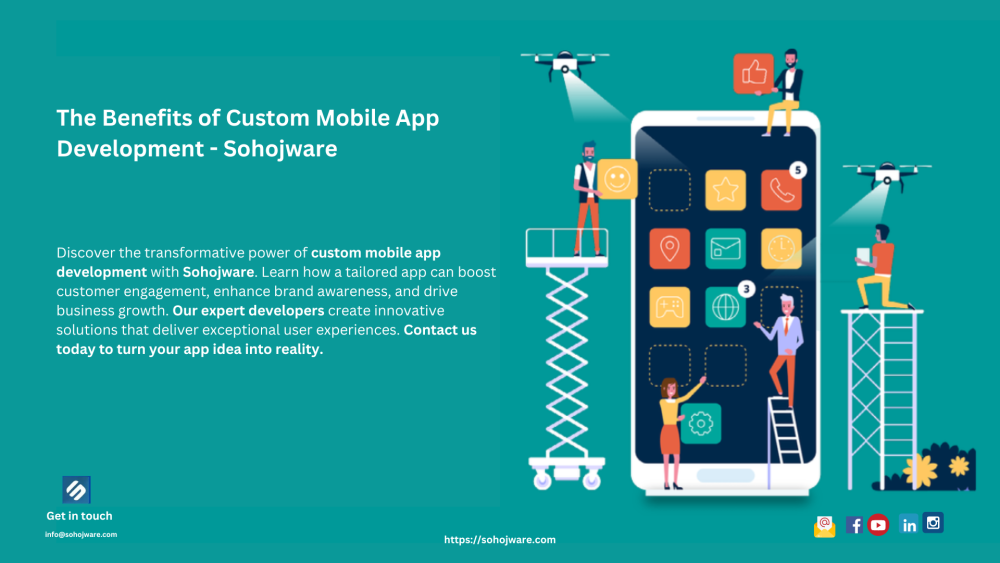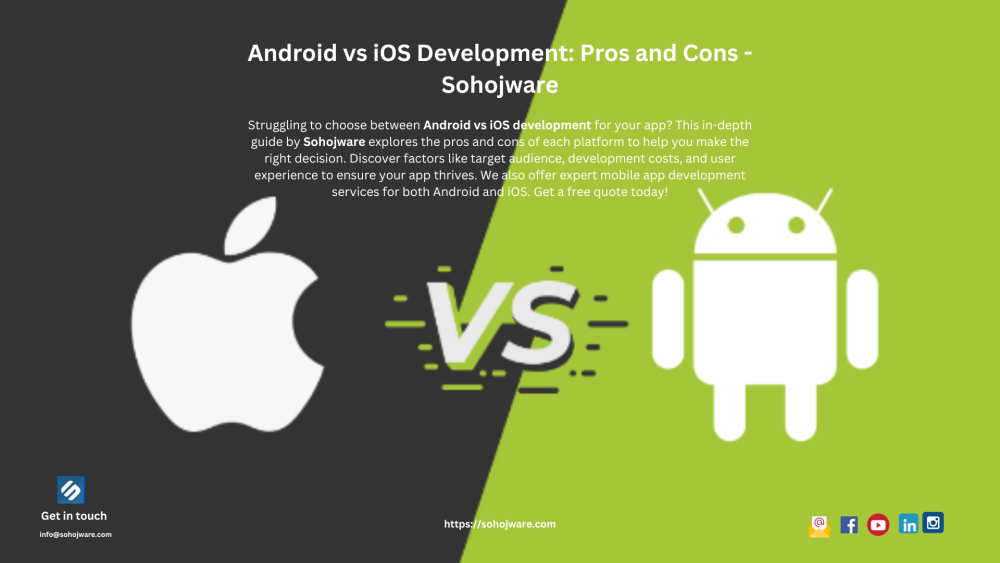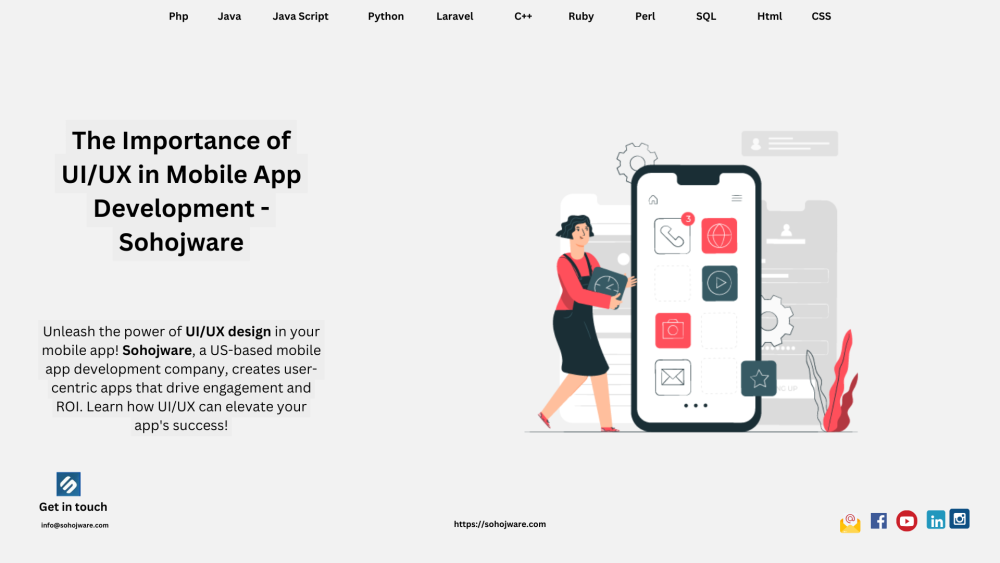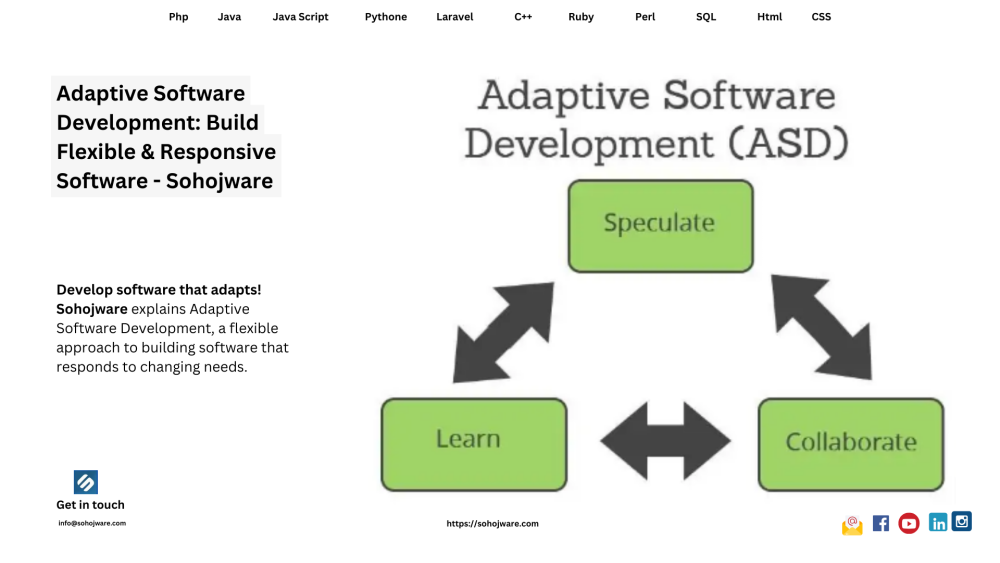1. Introduction
Welcome to the world of iPhone apps development, where innovation and creativity come together to enhance your mobile experience. In this article, we will dive into the fascinating realm of developing applications for iPhones.
Whether you are a tech enthusiast or a business owner looking to expand your reach, understanding the process of iPhone apps development is essential. Let's embark on this exciting journey together!
Table of Contents:
| Sr# | Headings |
|---|---|
| 1. | Introduction |
| 2. | The Power of iPhone Apps Development |
| 3. | Understanding the iPhone App Ecosystem |
| 4. | Understanding iPhone Apps Development |
| 5. | The Benefits of iPhone Apps |
| 6. | Getting Started with iPhone App Development |
| 7. | Choosing the Right Tools and Technologies |
| 8. | Designing User-Centric iPhone Apps |
| 9. | Exploring the App Development Process |
| 10. | Popular Tools for iPhone Apps Development |
| 11. | Designing User-Friendly iPhone Apps |
| 12. | Maximizing App Performance |
| 13. | Ensuring App Security and Privacy |
| 14. | Monetizing Your iPhone Apps |
| 15. | Emerging Trends in iPhone Apps Development |
| 16. | Conclusion |
| 17. | Frequently Asked Questions |
2. The Power of iPhone Apps Development
Have you ever wondered about the magic behind your favorite iPhone apps? How do these apps come to life and enhance the functionality of your device? We will delve into the world of iPhone apps development and explore the endless possibilities it offers.
Whether you're a budding developer or simply curious about the process, this comprehensive guide will provide insights into the art and science of creating iPhone apps that captivate and delight users.
3. Understanding the iPhone App Ecosystem
Before diving into the development process, let's gain a deeper understanding of the iPhone app ecosystem. Apple's App Store is a vibrant marketplace where millions of apps are available for download.
These apps cater to various needs, ranging from productivity and entertainment to education and lifestyle. With over a billion active iPhone users worldwide, the demand for innovative and user-friendly apps continues to soar.
4. Understanding iPhone Apps Development
Before we delve into the details, let's start by understanding what iPhone apps development entails. It refers to the process of creating software applications specifically designed to run on Apple's iOS operating system.
These apps can be downloaded and installed from the App Store, offering a wide range of functionalities and services.
5. The Benefits of iPhone Apps
iPhone apps have revolutionized the way we interact with our smartphones. Here are some key benefits of iPhone apps development:
-
Enhanced User Experience: iPhone apps are known for their intuitive interfaces and smooth user experience, providing a seamless interaction between users and applications.
-
Access to Exclusive Features: With iPhone apps, users can take advantage of unique features and functionalities that are tailored specifically for Apple devices, offering a superior user experience.
-
High Security Standards: Apple's stringent app review process ensures that iPhone apps meet high-security standards, providing users with a secure environment to explore and utilize various applications.
6. Getting Started with iPhone App Development
Getting started with iPhone app development may seem intimidating at first, but fear not! Apple provides a comprehensive suite of tools and resources to support developers. The first step is to set up your development environment by downloading Xcode, Apple's integrated development environment (IDE).
Xcode offers a robust set of features, including a code editor, interface builder, and debugging tools, making it a one-stop solution for app development.
7. Choosing the Right Tools and Technologies
When embarking on an iPhone app development journey, choosing the right tools and technologies is crucial. Swift, Apple's programming language, has gained immense popularity among developers due to its simplicity and power.
With Swift, you can write clean and concise code, speeding up the development process. Additionally, leveraging iOS frameworks and APIs enables you to tap into the full potential of the iPhone, creating seamless and feature-rich apps.
8. Designing User-Centric iPhone Apps
Design plays a pivotal role in the success of an iPhone app. Users expect visually appealing interfaces that are intuitive and easy to navigate. By adopting a user-centric design approach, you can create apps that deliver exceptional user experiences.
Consider factors such as color schemes, typography, and layout to craft visually stunning interfaces that align with your app's purpose and target audience.
9. Exploring the App Development Process
The app development process involves several stages, each crucial for creating a successful application. Let's take a closer look at these stages:
Idea Generation
This initial phase involves brainstorming and conceptualizing the app idea, identifying the target audience, and defining the app's purpose and features.
Planning and Research
A thorough market analysis and competitor research are essential to determine the app's viability and unique selling points. This phase also involves creating a comprehensive development plan and establishing a timeline.
Design and User Interface
The design phase focuses on creating visually appealing interfaces and user-friendly layouts. It includes wireframing, prototyping, and selecting appropriate color schemes and typography.
Development and Coding
The actual coding and development take place during this stage, where the app's functionality and features are implemented. It is essential to follow coding best practices and ensure compatibility with different iPhone models and operating system versions.
Implementing Functionality and Features
When developing an iPhone app, implementing the desired functionality and features is the heart of the process. This involves writing code to handle user interactions, process data, and deliver the intended app experience.
With Swift's concise syntax and extensive libraries, you can efficiently implement features like user authentication, data retrieval, multimedia integration, and more. Strive to create apps that are not only functional but also intuitive and enjoyable to use.
Testing and Debugging iPhone Apps
Thorough testing and debugging are crucial steps in the iPhone app development cycle. Apple provides various testing tools and frameworks, such as XCTest and Xcode's built-in debugger, to help identify and fix issues.
Conduct comprehensive testing to ensure your app functions flawlessly across different devices and iOS versions. By adopting a rigorous testing approach, you can deliver a polished and reliable app to your users.
Optimizing Performance for Better User Experience
Performance optimization is essential to provide a smooth and responsive user experience. Slow loading times, laggy animations, and inefficient resource usage can frustrate users and lead to app abandonment.
Optimize your app's performance by optimizing code, leveraging caching mechanisms, and minimizing network requests. Prioritize user experience by ensuring your app runs seamlessly, even under demanding conditions.
App Store Submission and App Marketing
Once your iPhone app is ready, it's time to submit it to the App Store and embark on app marketing efforts. Follow Apple's guidelines for app submission, ensuring compliance with design and content standards. Craft an engaging app description and utilize captivating screenshots and videos to showcase your app's features.
Additionally, implement effective app marketing strategies, such as social media promotion, influencer partnerships, and app store optimization (ASO), to increase visibility and attract a wider audience.
Monetization Strategies for iPhone Apps
Monetizing your iPhone app can turn your development efforts into a profitable venture. Explore different monetization strategies, such as in-app purchases, subscriptions, and advertisements, to generate revenue from your app.
Consider the nature of your app, target audience, and user preferences when deciding on the most suitable monetization approach. Strike a balance between monetization and user experience to ensure long-term success.
Future Trends in iPhone App Development
The world of iPhone app development is ever-evolving, with new trends and technologies emerging regularly. Stay updated with the latest advancements, such as augmented reality (AR), machine learning (ML), and Internet of Things (IoT), to capitalize on future opportunities.
Embrace emerging trends to create innovative and forward-thinking apps that captivate users and stay ahead of the competition.
10. Popular Tools for iPhone Apps Development
Developers have a variety of tools at their disposal to streamline the iPhone apps development process. Some popular tools include:
-
Xcode: Apple's integrated development environment (IDE), which provides a comprehensive set of tools for designing, coding, and debugging iOS apps.
-
Swift: Apple's programming language for iOS app development. It offers an intuitive syntax and a range of features that simplify the development process.
-
Firebase: A mobile platform by Google that offers a suite of services for app development, including cloud storage, authentication, and real-time database functionality.
-
Adobe XD: A design and prototyping tool that helps create interactive app designs and user interfaces before the actual development process begins.
11. Designing User-Friendly iPhone Apps
User experience (UX) plays a crucial role in the success of an iPhone app. Here are some tips for designing user-friendly apps:
-
Intuitive Navigation: Ensure that users can navigate through the app effortlessly. Use clear and concise labels, logical menu structures, and intuitive gestures.
-
Responsive Design: Design the app to adapt to different screen sizes and orientations, providing a consistent experience across all devices.
-
Visual Appeal: Use engaging visuals, appealing color schemes, and appropriate typography to create an aesthetically pleasing app interface.
-
Simplified Input: Minimize the number of input fields and utilize input validation to make the app user-friendly and error-free.
12. Maximizing App Performance
To deliver a smooth and efficient user experience, it is crucial to optimize the performance of your iPhone app. Consider the following strategies:
-
Code Optimization: Write clean and efficient code, minimize unnecessary computations, and optimize resource usage to ensure swift app responsiveness.
-
Caching: Implement caching mechanisms to store frequently accessed data locally, reducing the need for repeated server requests and enhancing app performance.
-
Regular Updates: Keep your app up to date with the latest iOS versions and device capabilities. This ensures compatibility and takes advantage of new features and improvements.
13. Ensuring App Security and Privacy
Maintaining the security and privacy of user data is of utmost importance in iPhone apps development. Here are some essential measures to consider:
-
Data Encryption: Encrypt sensitive user data both in transit and at rest to protect it from unauthorized access.
-
Secure Authentication: Implement robust authentication mechanisms, such as biometric authentication or strong passwords, to ensure only authorized users can access the app.
-
Privacy Policy: Clearly communicate your app's data collection and usage practices to users through a privacy policy. Comply with relevant regulations, such as the General Data Protection Regulation (GDPR).
14. Monetizing Your iPhone Apps
If you're considering monetizing your iPhone app, here are some popular monetization strategies:
-
In-App Purchases: Offer additional features, content, or virtual goods within the app that users can purchase.
-
Subscriptions: Provide access to premium content or services on a recurring basis, offering different subscription tiers to cater to various user needs.
-
Advertising: Display relevant advertisements within the app and earn revenue through clicks or impressions.
-
Sponsorships and Partnerships: Collaborate with brands or businesses that align with your app's purpose and audience to generate revenue through sponsored content or partnerships.
15. Emerging Trends in iPhone Apps Development
The field of iPhone apps development is constantly evolving. Stay ahead of the curve by keeping an eye on these emerging trends:
-
Augmented Reality (AR): AR apps combine virtual elements with the real world, offering immersive experiences for users.
-
MachineLearning and Artificial Intelligence (AI): Integrating machine learning and AI capabilities into apps can provide personalized recommendations, intelligent automation, and advanced data analysis.
-
Internet of Things (IoT) Integration: Connecting apps with IoT devices allows for seamless control and monitoring of smart devices, creating a connected ecosystem.
-
Voice User Interface (VUI): Voice assistants and voice-controlled apps are becoming increasingly popular, providing hands-free interaction and convenience.
-
Blockchain Integration: Implementing blockchain technology in apps can enhance security, transparency, and trust in transactions and data management.
16. Conclusion
In conclusion, iPhone apps development opens up a world of possibilities, enabling users to experience innovative and user-friendly applications.
By understanding the process, leveraging the right tools, and prioritizing user experience, developers can create successful iPhone apps that cater to the needs and preferences of the general public.
Stay updated with emerging trends and continuously refine your app to stay ahead in this dynamic and competitive landscape.
17. Frequently Asked Questions
-
What programming language is used for iPhone apps development?
- The primary programming language for iPhone apps development is Swift, developed by Apple specifically for iOS app development.
-
Can I develop an iPhone app without any coding knowledge?
- While coding knowledge is beneficial, there are platforms and tools available that allow for app development without extensive coding. However, having a basic understanding of programming concepts can be advantageous.
-
How long does it take to develop an iPhone app?
- The time required to develop an iPhone app depends on various factors, including the complexity of the app, features, and the development team's expertise. It can range from a few weeks to several months.
-
Do I need to pay to publish an app on the App Store?
- Yes, there is a yearly fee associated with being a registered Apple Developer and publishing apps on the App Store. The fee covers access to development resources, app distribution, and updates.
-
How can I promote my iPhone app?
- There are various strategies to promote your iPhone app, including app store optimization (ASO), social media marketing, influencer partnerships, content marketing, and targeted advertising campaigns. Tailor your promotion efforts to reach your target audience effectively.
-
How long does it take to develop an iPhone app?
- The development timeline for an iPhone app can vary depending on various factors, including complexity, features, and team size. On average, it can take several weeks to several months to develop a fully functional iPhone app.
-
Can I develop an iPhone app on Windows?
- The primary development environment for iPhone apps is Xcode, which is only available on macOS. However, there are workarounds, such as using virtual machines or cloud-based services, that allow you to develop iPhone apps on a Windows computer.
-
How can I monetize my iPhone app?
- There are several monetization strategies you can consider, such as in-app purchases, subscriptions, advertisements, or offering a paid version of your app. The choice depends on your app's nature, target audience, and revenue goals.
Remember, iPhone apps development is an exciting and ever-evolving field. With creativity, dedication, and a user-centric approach, you can develop apps that captivate users and make a meaningful impact in the digital landscape.




